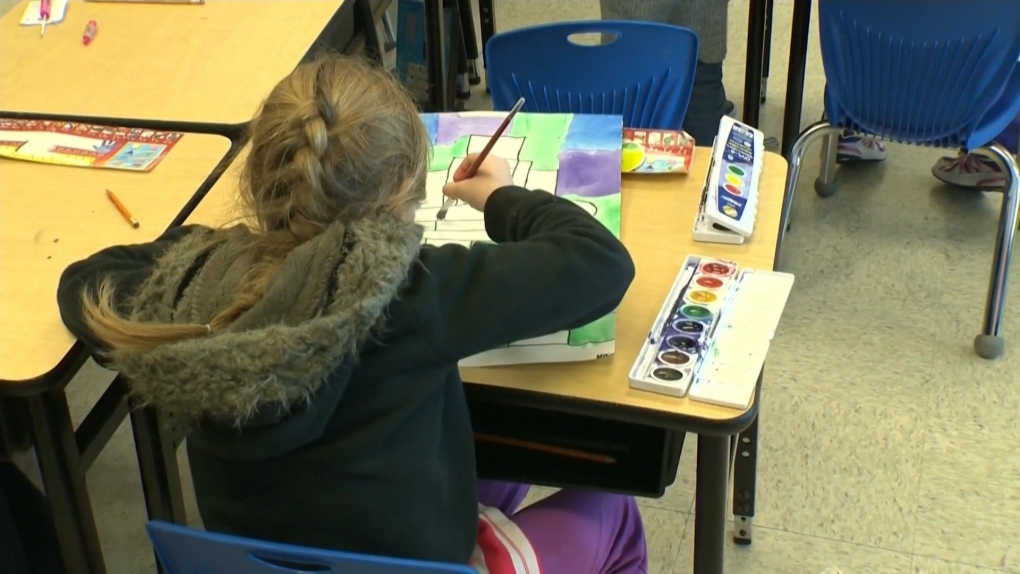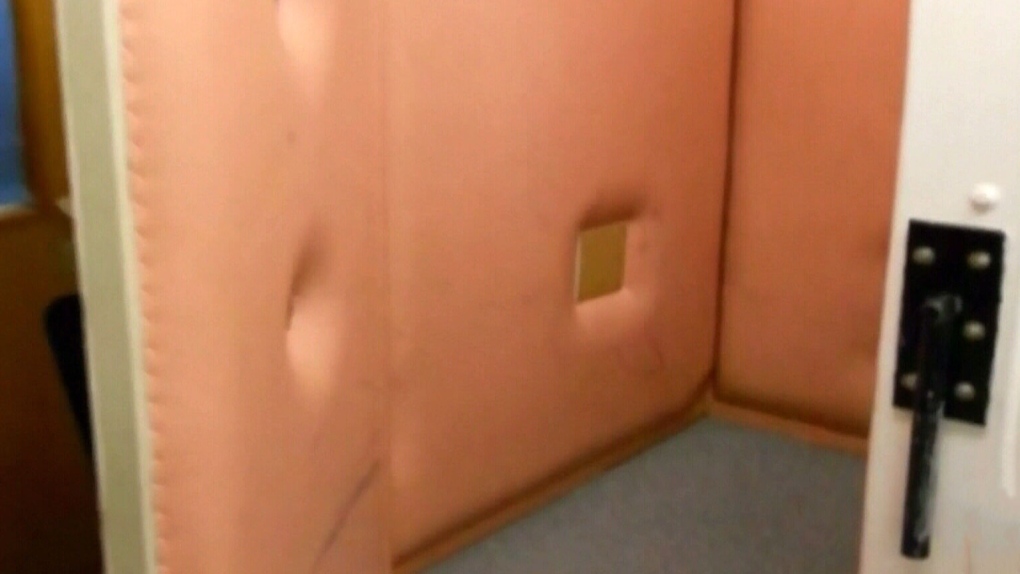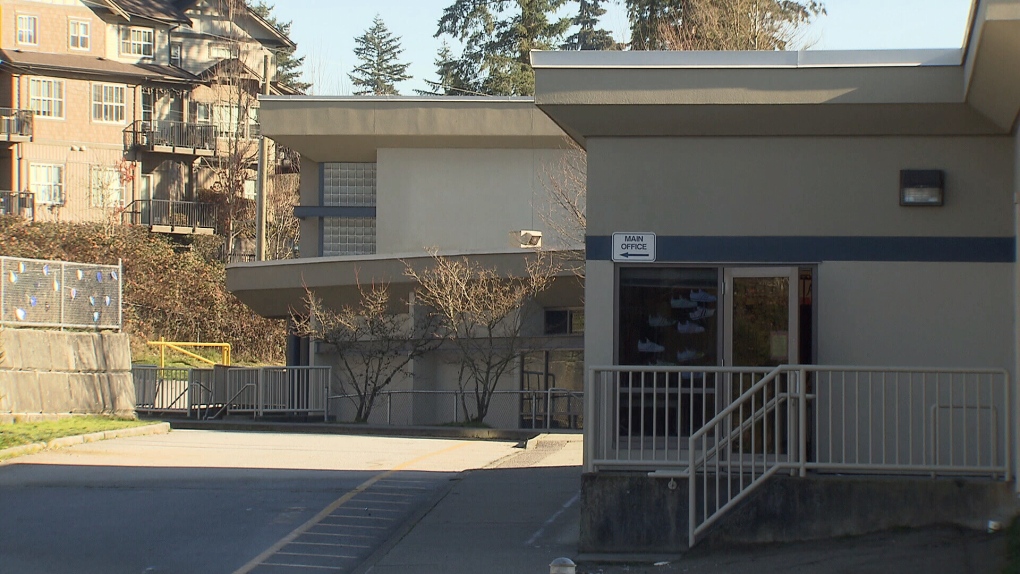'Only a last resort': Inclusion Alberta calls on parents to help close seclusion rooms
 The Calgary Board of Education and Calgary Catholic School District say seclusion rooms and isolation are used by educators in their schools, but only as a last resort. (File)
The Calgary Board of Education and Calgary Catholic School District say seclusion rooms and isolation are used by educators in their schools, but only as a last resort. (File)
A family advocacy group is calling on all Alberta parents to have a conversation with their children's schools about the practice of seclusion rooms, something it says can cause serious emotional and psychological damage.
Inclusion Alberta, which works with children and adults with intellectual disabilities and their families to help them build a life that is fully included in society, says seclusion has been used for a very long time in Alberta and across Canada.
Both of Calgary's major school boards have admitted they have seclusion rooms in their institutions and the Edmonton Public School Board said there are 83 schools that have one or more seclusion rooms. However, all three insist they comply with all of the province's rules regarding them.
"Seclusion is a practice – it is being involuntarily confined in a space from which you are prevented from leaving," said Trish Bowman, Inclusion Alberta's CEO, in an interview with CTV News.
She says there are standards in place for how they're used, but adds they should only be used as a last resort.
"(Times) where the child is actually at risk of harming themselves or potentially others," she said.
"They're not to be used in instances of property damage or non-compliance or any of those situations. It is really supposed to be an emergency response to an unanticipated situation that seems to be the only recourse."
Bowman says her organization, along with many others, have been advocating for the provincial government to stop the use of seclusion in all of Alberta's schools and close all of the existing rooms.
In 2018, she says Inclusion Alberta put out a survey and she was shocked to learn that many parents at that time had no idea about them.
"If you don't have a child who has been put in one, many people had no idea they even existed in our schools," she said.
Bowman says seclusion rooms have traumatic effects on the children who are put in them as well as other children in the classroom.
"There's all kinds of research and evidence that they produce trauma. Children can be harmed both physically, emotionally and psychologically. Not just the children put in the rooms – they can be extremely traumatizing for children who witness others being put in those rooms."
According to the organization's survey data, which was referenced in a W5 documentary earlier this year, found almost 80 per cent of the parents whose children were secluded said they were "emotionally traumatized or distressed," 19 per cent reported signs of being injured and 15 per cent said they suffered physical pain.
Bowman says seclusion and isolation is not "an educational practice."
"For the same reasons, isolation is very tightly monitored in the prison system because it's understood how harmful it is."
BANNED BUT THEN BROUGHT BACK
In 2019, under the former NDP government, a ban was put in place, but when the UCP was elected, that order was rescinded and standards were installed.
Bowman had hoped that would help lead the way to positive change.
"The idea was to track and understand how prevalent the use was (such as) how many children were being placed in them," Bowman said.
"Our hope was that would be done with an eye towards actually putting in place the supports districts need to reduce the use and ultimately close them."
However, once the COVID-19 pandemic hit, attendance data became skewed.
Now, Bowman says data flowing again, but there still isn't a clear picture of what's going on.
"We don't have any reason to suspect that the usage has decreased – we simply don't know," she said.
"There have been some districts that have done information requests that seem to indicate that the use has declined since the original ban and the standards coming into play.
"We do know that these rooms are still being built and that they are still being used."
Bowman says Inclusion Alberta's call for parents to seek information on seclusion rooms is an effort to spread awareness of the prevalence of their use.
"They should know what the control and use of these rooms are," she said.
"Any child is at risk of being put in there if the room exists. It isn't solely a child who has an intellectual disability, though those would be, of course, the families we're connected to.
"We really believe families should have the right to know if a room like this exists in their school and they should have a conversation with their school about when it is used, how is it monitored and would they consider closing it?"

Bowman says the conversation parents have with their school can begin with asking the principal if a seclusion room exists in the building.
"If the answer is yes, the response could be 'could I see it and can you show me the policies around how it is used and monitored? What are the circumstances a child might be placed in it?'"
She says that parents also have the right to protect their children from being placed in a seclusion room, if it exists in the school.
"I think at that time a parent can also very clearly indicate that they don't want their child placed in that room – the school does not have their consent to put their child in that room.
"Consent is supposed to be part of the equation."
MORE TRAINING NEEDED
Michelle Briegel, an associate professor in child studies at Calgary's Mount Royal University, says there is trauma associated with the use of seclusion rooms in Alberta, but the fraction of schools that actually have them is very small.
"They are in specialized programs – programs where children are getting violent," she said.
"I'm not saying they shouldn't be there, though I'm not sure that they should, but they certainly shouldn't be called 'seclusion rooms.' Right there, that's an awful name for it."
Briegel, who teaches child and youth care practitioners to work with difficult and challenging children, says the official use of the rooms is for children to have a space where they can "calm down" without distraction.
However she says the schools that do have them are not using them for that purpose.
"(They) often don't have properly trained people to utilize them," she said.
"When a child is taken to a seclusion room or time-out room, in most cases, they have to be physically taken there. And so that's where the trauma would come from that parents are talking about."
She says the rooms should only be used as "a last resort."
"Because the other kids are in danger and that's not okay."

What could be happening, Briegel says, is staff members are using the seclusion rooms as more of a "punishment" for students.
"It should only be used after all other de-escalation methods have been used first," she said.
"But what I am hearing, because we've had many students out in the field and from other practitioners is that it's not happening as a last resort – people are going to it far too quickly when it's available."
She says there needs to be more training for staff members at schools that have seclusion rooms to prevent misuse of those spaces.
"People should be trained in de-escalation techniques, trauma-informed crisis management and child development. What I think is happening is too many places are not hiring people who have that training."
SCHOOL BOARDS COMPLY WITH GUIDELINES
Calgary's school boards admit that seclusion rooms exist in the education system, but say they are only used in "unique situations."
The Calgary Catholic School District said in a statement to CTV News that all of its institutions strive to comply with the ministerial order issued by Alberta Education regarding the use of seclusion rooms.
"The (CCSD) prioritizes the safety of all students," it said.
"Seclusion rooms are only utilized by trained staff with the knowledge and support of parents through documented student support plans."
The Calgary Board of Education (CBE) says its use of seclusion rooms is also in alignment with the province's regulations.
"(The) CBE's Administrative Regulation 3007 on the use of seclusion, physical restraint and timeout ensures compliance with Alberta Education’s standards while providing clear expectations and guidelines for staff," the CBE wrote in its own statement.
The board also says the measure is only used as a last resort.
"The use of seclusion and physical restraint is an emergency measure that is only to be used in exceptional circumstances, when no other method of preventing a student injury to themselves or others has succeeded.
"It is only used as an emergency measure at three unique setting schools in the CBE."

Alberta Education says it, too, is committed to a "welcoming, caring, respectful and safe learning environment" for all students and staff.
"In response to public and education partner feedback, Alberta's government worked with school authorities and stakeholders in 2019 to develop school standards for seclusion and physical restraint," said Alberta Education's communications director Jessica Luchenko in a statement to CTV News.
"These standards were developed to prevent the misuse of seclusion rooms and ensure the well-being, safety and dignity of all students and staff."
The guidelines were finalized with the input of a number of key partners, including Inclusion Alberta, the Autism Society of Alberta, the Alberta Teachers' Association, the Alberta School Boards Association, the Alberta School Councils' Association, the College of Alberta School Superintendents, Alberta's four metro school boards.
The province also highlighted that individualized program plans – a collaborative strategy between the student, parents, teachers and others – are developed to support students with disabilities in the school system.
Bowman says she's only had "a very introductory conversation" with Education Minister Demetrios Nicolaides about Inclusion Alberta's advocacy on seclusion rooms.
"Our hope is that when we have more information around how these rooms are being used that we can have a meaningful conversation about how we can stop their use."
CTVNews.ca Top Stories

Uninspired Canada upset by Latvia in a shootout at world juniors
Eriks Mateiko scored the only goal of the shootout as Latvia stunned an alarmingly uninspired Canada 3-2 at the world junior hockey championship Friday.
Trudeau, Carney push back over Trump's ongoing 51st state comments
Two senior members of the federal cabinet were in Florida Friday pushing Canada's new $1.3 billion border plan with members of Donald Trump's transition team, a day after Prime Minister Justin Trudeau himself appeared to finally push back at the president-elect over his social media posts about turning Canada into the 51st state.
B.C. man who flipped 14 homes in four years is fined $2M for tax evasion
A serial property flipper in British Columbia has been convicted of tax evasion and fined more than $2 million for failing to report nearly $7.5 million in earnings.
Calgary Boxing Day crash victim identified, mother and sister still in hospital
A nine-year-old girl has died in hospital after the vehicle she was in was struck by a driver in a stolen vehicle fleeing from police.
Missing dog returns to Florida family, rings doorbell
After a nearly weeklong search, Athena, a four-year-old German Shepherd and Husky mix, found her way home to her Florida family in time for Christmas Eve and even rang the doorbell.
'Home Alone' director Chris Columbus explains how the McCallisters were able to afford that house
Audiences have wondered for years how the family in 'Home Alone' was able to afford their beautiful Chicago-area home and now we know.
Scheffler to miss tournament after injuring hand making Christmas dinner
Scottie Scheffler will miss The Sentry tournament next month after the world number one suffered an accidental puncture wound to his right hand preparing Christmas dinner and had to have surgery, the PGA Tour said on Friday.
'Nobody should have to go through that': N.B. family grieving father, daughter killed in crash
A New Brunswick family is grieving the loss of a father and daughter in a crash.
Gerry Butts says Trudeau less likely to remain leader since Freeland quit
A former chief adviser and close friend to Prime Minister Justin Trudeau said Friday he doesn't think Trudeau will stay on to lead the Liberals in the next election.

































